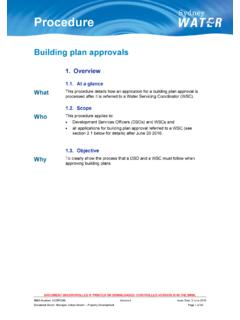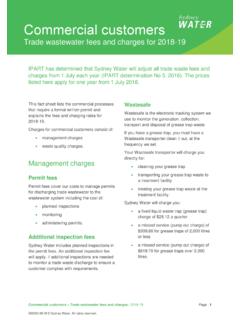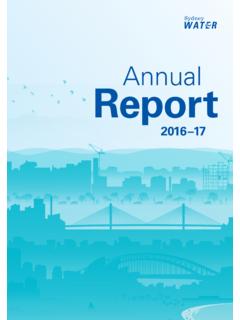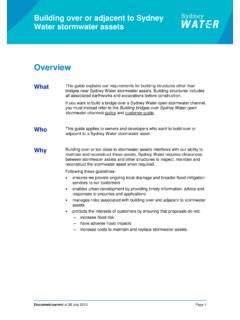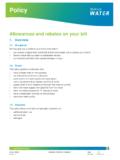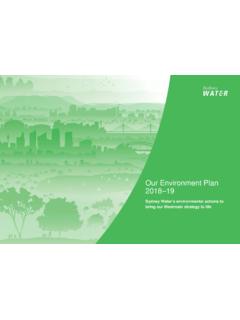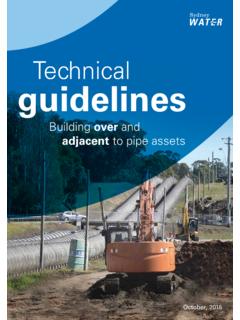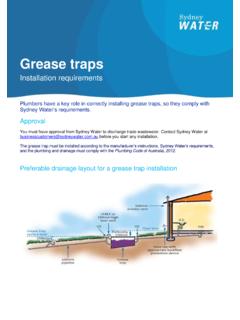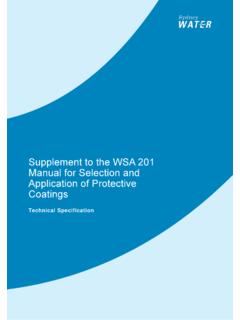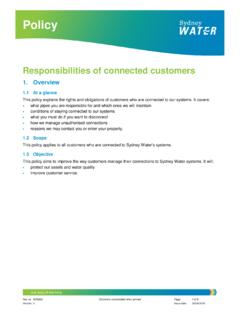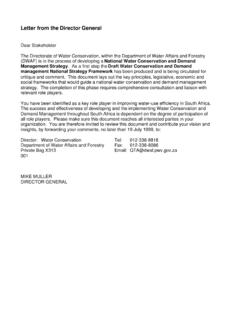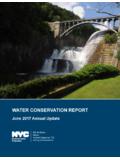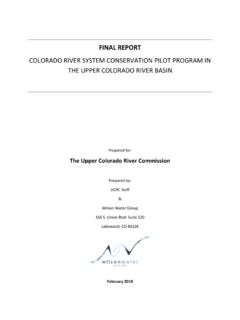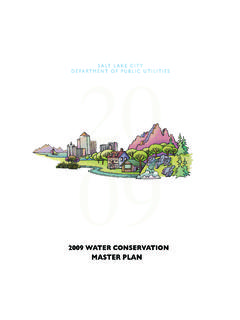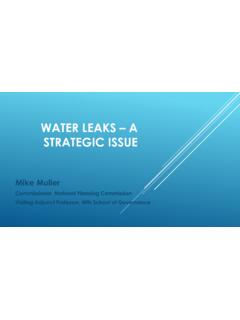Transcription of Water Conservation Report - Sydney Water
1 Sydney Water Water Conservation Report 2017-2018 Water Conservation Report | 2017-2018 Page | 2 Table of contents Executive summary .. 3 Introduction .. 4 Our performance and five-year plan .. 5 Water use in 2017-18 .. 5 Our Water Conservation performance in 2017-18 .. 7 Our 5 year Water Conservation plan: 2018-19 to 2022-23 .. 8 Water Conservation programs delivered .. 10 Residential Water 10 Business Water efficiency .. 12 Leakage management .. 12 Water recycling .. 14 15 Regulatory measures .. 16 Discontinued programs prior to 2017-18.
2 16 Future Water Conservation .. 17 New projects in 2018-19 (subject to funding approval) .. 17 Programs more viable with a future increase in the value of Water .. 17 Research and development activities .. 19 Appendix A Reporting 22 Appendix B Method overview .. 23 Demand forecasting and monitoring .. 23 Economic Level of Water Conservation .. 25 Appendix C Recycled Water scheme performance .. 28 Appendix D Leakage management 29 Key leak management statistics .. 29 Water balance .. 30 Appendix E Past programs .. 31 Appendix F Glossary .. 34 Appendix G List of acronyms and units.
3 35 Water Conservation Report | 2017-2018 Page | 3 Executive summary This Report outlines our Water Conservation Plan for the next five years and reports on the costs and Water savings from our Water Conservation programs run in 2017-18. This Plan supports delivery of the NSW Government s 2017 Metropolitan Water Plan, which recognises the critical value of Water Conservation in balancing supply and demand for greater Sydney . We saved 10,462 million litres (ML) of Water from our ongoing Water Conservation programs in 2017-18, with more than 10,000 customers participating in our Water efficiency and education programs, such as the successful WaterFix Strata program.
4 We also saved Water through our ongoing leakage and Water recycling programs. Sydney experienced unusually protracted hot and dry weather in 2017-18 with total Water use increasing to 599,885 ML or 324 litres per person per day (LPD). The hotter weather has also contributed to increased leakage as clay soils expand and exert pressure on pipes this is an issue facing Water utilities across eastern Australia. Our 5-year Water Conservation Plan includes new Water efficiency programs to partner with councils, optimise rainwater tank use, and a public awareness and education campaign to remind the community about the precious nature of Water and the need to be Water wise.
5 We are also currently completing a major review of our Water Conservation program to ensure that we are ready to increase our Water Conservation activities if dam levels fall further. This includes revitalising our Water efficiency program by developing new offerings for our residential and non-residential customers, and establishing an approach to continually research, test, prototype and design new Water saving product and service offerings. Water Conservation Report | 2017-2018 Page | 4 Introduction Each year, we Report on how we conserve Water in accordance with Section 3 of our Operating Licence 2015 20201.
6 Our rolling five-year Water Conservation Plan outlines our Water Conservation program in three main areas to reduce demand on our surface Water supplies: Water efficiency, which aims to support customers to use Water resources wisely. It includes efficient technologies, education, metering, voluntary use reduction, audits and supporting regulatory measures (eg BASIX2). Water leakage, which aims to reduce Water loss in our Water network. It includes active leak detection and repair, and optimised response times to repair leaks and breaks. Water recycling, which reduces the amount of Water we take from our dams.
7 Water recycling ranges from large scale wastewater recycling to sewer mining and stormwater harvesting. Section 2 outlines our performance for 2017-18 and the projects included in our 5-year plan, based on the current value of Water . Further details of each these projects can be found in Section 3. Section 4 outlines future Water Conservation opportunities, including our research and development program. This Water Conservation Plan is updated annually as the value of Water changes and we improve our understanding of the effectiveness of Water saving projects.
8 This allows us to start, stop or adjust the scale of efficiency projects, and introduce new projects. It is primarily based on the Economic Level of Water Conservation (ELWC) methodology3, approved by IPART in December 2016. The ELWC methodology promotes economically efficient Water Conservation projects that consider social and environmental costs and benefits in addition to the cost of the program and the Water saved. Where projects are considered economically efficient at the current value of Water , we have included them in our five-year plan. The plan also includes Water Conservation projects offered to help manage social hardship and build capability.
9 1 Appendix A outlines how this Report meets specific requirements in the Operating Licence Reporting Manual. 2 3 ~ Water Conservation Report | 2017-2018 Page | 5 Our performance and five-year plan Water use in 2017-18 2017-18 Total Water use (potable Water and unfiltered Water )4, including Residential sector Non-residential sector (industrial, commercial and government properties) Non-revenue Water including leaks 599,885 million litres (or 600 GL) 65% 24% 11% (including 9% from leakage) Observed average Water use per person 324 litres a day (or 118 kL a year)
10 Weather corrected average per person Water demand 306 litres a day (or 112 kL a year) Figure 2-1 Despite a 25% increase in population the total demand for drinking Water remains lower than it did before mandatory restrictions were introduced in late 2003. It is estimated that the hotter drier weather in 2017-18 resulted in a 33 GL increase in demand compared to what would be expected in a year with average weather conditions. 4 Sectoral splits are estimated based on available consumption data for period April 2017 to March 2018.
